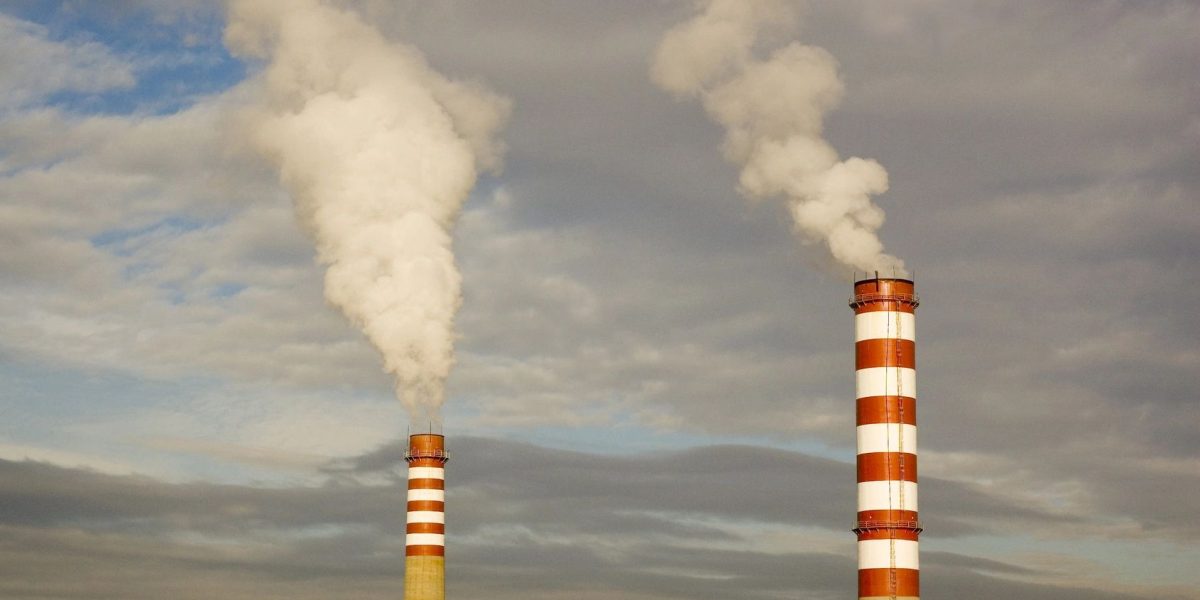Reducing Carbon Emissions
Human activity has caused carbon dioxide levels to be the highest they have ever been in two million years. Scientists now predict that the continued uncontrollable use of fossil fuels will lead to dangerous levels of climate change (Neuman, 2021). While nearly all of us have extensive carbon footprints – from driving to the grocery store to traveling the world in carbon-fueled airplanes – research shows that two-thirds of all anthropogenic carbon emissions come from only 90 companies and government-run industries. (Starr, 2016). Although these companies can be considered the “face” of global warming, they are not alone. Severin Borenstein, a business and public policy expert at UC Berkeley, reiterates that the public plays a significant role in the production of these carbon emissions through the high demand for the products these companies create (Starr, 2016). In an attempt to curb the supply & demand relationship that is leading to climate change, multiple public policy initiatives were implemented to mitigate fossil fuels’ environmental impact.
Carbon Taxing
One of the more popular concepts is carbon taxing. In this practice, governments set a price that carbon emitters must pay for every ton of greenhouse gas emissions they create. In theory, this would encourage companies to decrease the amount of carbon they produce; however, because consumers create a demand for products (manufactured with fossil fuels) that far outweighs the costs companies incur through their production, the companies have little incentive to curb their carbon-emitting practices, even in light of the pending carbon-related taxes.
For example, gasoline prices have been consistently rising in America, yet many consumers continue to buy fuel-run automobiles due to their dependence on the convenience these cars provide. Although these carbon-emitting fuel and automobile manufacturers will need to pay large amounts of tax due to their production methods, they will still be profiting because of the value of their products to consumers.
Is it Enough?
Even if governments could find a tax rate that incentivizes companies to seek greener manufacturing methods, would that tax be enough to slow the effects of global warming? According to a Brookings Institute report from 2019, “a $25 per ton carbon tax that rises by one percent per year would reduce emissions by 17 to 38 percent…by 2030”. However, such a decrease in carbon emissions would be considered “slight.” It may not be enough progress to prevent the hazardous conditions that scientists expect to arise in the next few decades.
Additionally, establishing rates and collecting taxes is not as simple as it sounds; therefore, governments may find it difficult to continually work on assessing our environment’s current needs, addressing carbon outputs, increasing carbon taxes, and enforcing the new rates yearly. At some point, finding the equilibrium between production-based carbon emissions and consumer product demand becomes an exercise in futility.
Where's the Money Go?
Even if the government could find a way to create an equilibrium between supply and demand using carbon taxation, what they did with the money generated would ultimately determine if carbon taxes would have an overall positive effect on our society. According to the Peter G. Peterson Foundation, “The effect of a carbon tax on the economy would depend on the revenue uses of the policy; without accounting for how the revenues from a carbon tax would be used, such a tax would have a negative effect on the economy.” Previously, European countries strictly followed carbon taxing; however, evidence indicates no positive impact on GDP or employment rates. For example, if the government could use the tax money to create programs that would work on reversing climate change, we would be able to prevent dangerous conditions. This would result in a positive effect on our society. However, if the tax revenue were simply used to offset other expenses and programs not associated with global warming, it would not necessarily positively affect our society.
Cap and Trade
While there are weaknesses in the carbon taxing model, the idea of “carbon accountability” has continued to evolve. A concept called cap and trade has proven to be a more effective way to limit the output of greenhouse gasses associated with consumer goods. This concept puts a hard cap on the amount of carbon emissions a company can produce. For example, the government allows companies to emit only one ton of carbon in a certain period; this is the “cap” portion of the policy. However, some companies may be more environmentally friendly, making the one-ton limit considerably more than they need (or want). These companies can sell or “trade” their allowances to other companies that create more emissions. This method incentivizes companies that are releasing less carbon, as they can make a profit by selling their allocations to other companies that are more dependent on non-environmentally friendly sources (Riley, 2017). Unlike carbon taxing, which appears to only work “in theory,” cap and trade is a step in the right direction as it has shown positive results in practice.
In Theory and Practice
China, the world’s largest greenhouse gas emitter, has recently become an avid user of cap and trading by introducing a national program to tackle climate pollution in their country. Their program “covers more than 2,600 companies in regions with a population of more than 258 million.” Additionally, the European Union’s Emissions Trading System that was in place in 2005 lowered emissions by 29% by 2018. Finally, a little closer to home, California’s cap, and trade system decreased carbon emissions by 10% between 2013 and 2018. As a result, California has reduced greenhouse gasses emitted, and its economy has been linearly growing through the years (Neuman, 2021).
A Finite Supply
Compared to carbon taxing, which allows companies to emit carbon as long as they are willing to pay for it, cap and trade limit the amount of greenhouse gasses emitted, regardless of demand. The amount of carbon emitted will be fixed, but the companies that purchase the rights to emit that carbon will change (based on market economics). Eventually, companies constantly buying allowances from other companies will be forced to find alternatives to reduce the amount of carbon they emit because the prices to purchase additional emission rights will become too high.
Companies not finding more environmentally friendly substitutes will fall behind companies in their industry that can be more resourceful and conserve money on allowances. These companies will then be able to produce their goods for a lower price, making them more valuable to consumers, more profitable to the company, and more sustainable for the planet (Patnaik et al., 2021).
Time is of the Essence
Carbon taxing is a legitimate attempt to decrease carbon emissions. However, due to the policy format, it may not decrease carbon emission rates to prevent climate change. The countries and states that have adopted cap and trade have found that it decreases emission rates and increases GDP. If governments implement cap and trade policies worldwide, we can get hold of climate change in time.
Works Cited
“Cap-and-trade”. Cornell Law School. https://www.law.cornell.edu/wex/cap-and-trade. Accessed 20 August 2022.
“Carbon Tax Basics”. C2ES. https://www.c2es.org/content/carbon-tax-basics/. Accessed 20 July 2022.
“How cap and trade works”. EDF. https://www.edf.org/climate/how-cap-and-trade-works. Accessed 20 July 2022.
Neuman, Scott. “Earth has 11 years to cut emissions to avoid dire climate scenarios, a report says”. NPR. 4 November 2021. https://www.npr.org/2021/11/04/1052267118/climate-change-carbon-dioxide-emissions-global-carbon-budget. Accessed 20 July 2022.
Patnaik, Sanjay and Kennedy, Kelly. “Why the US should establish a carbon price either through reconciliation or other legislation”. Brookings. 7 October 2021. https://www.brookings.edu/research/why-the-us-should-establish-a-carbon-price-either-through-reconciliation-or-other-legislation. Accessed 20 July 2022.
Riley, Tess. “Just 100 companies responsible for 71% of global emissions, study says”. The Guardian. 10 July 2017. https://www.theguardian.com/sustainable-business/2017/jul/10/100-fossil-fuel-companies-investors-responsible-71-global-emissions-cdp-study-climate-change. Accessed 20 July 2022.
Starr, Douglas. “Just 90 companies are to blame for most climate change, this ‘carbon accountant’ says”. Science. 25 August 2016. https://www.science.org/content/article/just-90-companies-are-blame-most-climate-change-carbon-accountant-says. Accessed 20 July 2022.
“WHAT IS A CARBON TAX? HOW WOULD IT AFFECT THE ECONOMY?”. PGPF. 30 September 2020. https://www.pgpf.org/budget-basics/what-is-a-carbon-tax-how-would-it-affect-the-economy



